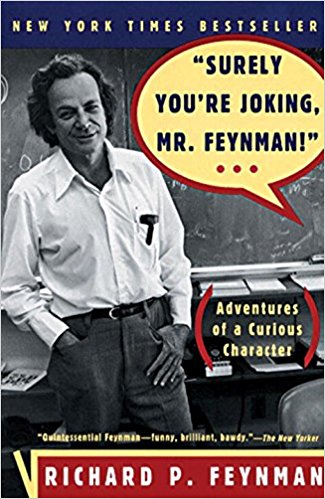Richard Feynman, known as the great explainer, is one of the most interesting people to have ever lived. Graced with insatiable curiosity, he was a Nobel Prize winning theoretical physicist who was also proficient at playing the bongos, lock picking, drawing, among other things. A true polymath of his time.
If you haven’t already, I would highly recommend checking out his autobiography, Surely You’re Joking, Mr. Feynman, which explores much of his life and many adventures. While his contributions are many, one of things that may far outlast his legacy is a simple mental model he used to learn and understand everything, known as The Feynman Technique.
While his contributions are many, one of things that may far outlast his legacy is a simple mental model he used to learn and understand everything, known as The Feynman Technique.
Here’s how it works.
Step 1: Identify the subject & start studying
This can literally be anything, but the point is to choose something you’d like to know more about. Once you have the subject down, start studying it.
Step 2: Teach it to a child
You don’t actually have to find a child to try to explain it to, but it wouldn’t hurt. The point is to be able to explain what you are trying to learn, in simple, succinct language.
Why do this? Being able to explain or teach a concept shows mastery, but being able to do so simply shows that you truly understand the subject at hand.
To complete this step, take a piece of paper with the subject matter at the top and then write down an explanation of it. It won’t be perfect, especially on the first try, but it will quickly help you determine how much you understand so far.
Step 3: Find the knowledge gaps
Based on what you’ve written, you will be able to identify what you already know, as well as the what gaps are still in your understanding. Identify all the knowledge gaps that you still have, where you are still struggling to explain things, and dive back into the material.
Study the gaps and areas that are still difficult for you to explain.
Step 4: Repeat and refine
The final step is to repeat the process. Continue to study and explain the material, until you arrive at a simple, succinct version of the material. Ideally something you actually could teach to a child.
This ability to distill complex information into simple terms is one of the easiest ways to test your knowledge on any subject. Use analogies, stories, and everyday examples to come up with the simplest explanation possible because that is when you finally know what you’re talking about.
Richard Feynman led an interesting life, but he was most driven by his curiosity. As such, how he learned is probably one of the most interesting things we can celebrate and find value from.
I was born not knowing and have had only a little time to change that here and there.Richard Feynman
If you are trying to learn something new, try using the Feynman Technique to gauge your learning along the way and hopefully achieve a level of true understanding.
